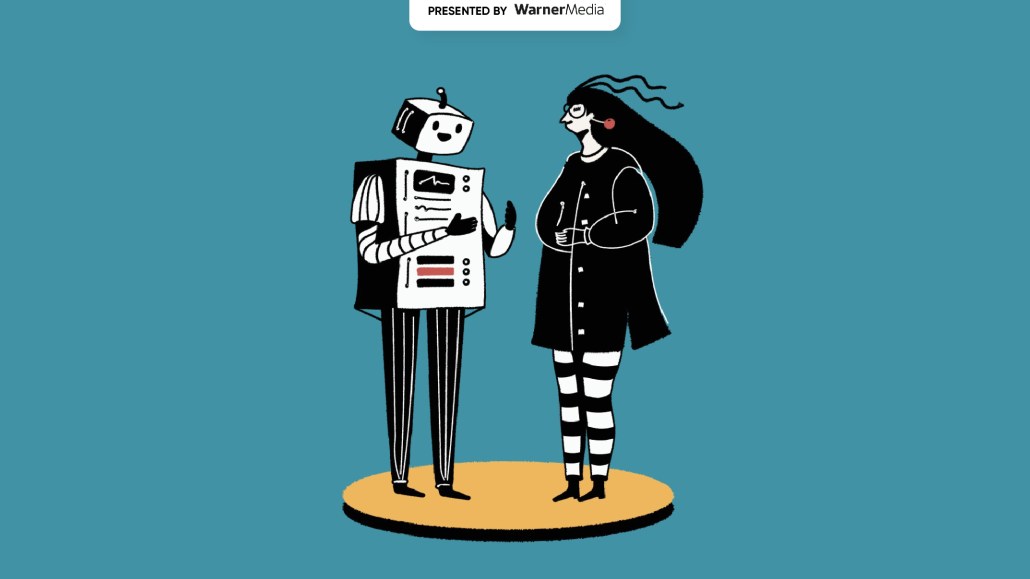With CES Debut, L’Oréal seeks to reinvent hair-dye application with the Colorsonic at-home device

This article was first reported — and published by Digiday sibling Glossy
L’Oréal is out to revolutionize a category of beauty it first invented: at-home hair dye.
On Wednesday at CES, L’Oréal is debuting a new at-home device called Colorsonic, which can be used to mix and apply L’Oréal Paris hair dye more easily and reliably than the DIY version of the last 115 years. L’Oréal first invented synthetic hair dye, with a product called “Aureole,” in 1907. As noted by Guive Balooch, global head of research and innovation at L’Oréal’s tech incubator, hair color formulation has since gone through significant innovation, but hair color application has not.
Balooch pointed to two big tensions in the current hair dye application process, across both home and salon usage. The first is the elaborate process of using an at-home dye, which involves donning latex gloves and mixing formulas to create a dye and dealing with the mess of application itself. The second is getting the right color in a salon, especially for those who have moved or are traveling.
“Colorsonic is a way to use technology to break some of the boundaries that people have when it comes to their fear of coloring their hair. That’s especially today, when we’re at home and want to do more things at home. We need to make people’s lives easier [when they] do it,” said Balooch.
For at-home hair dye, users can purchase a special cartridge by L’Oréal Paris (the first L’Oréal portfolio brand to offer Colorsonic dye) and place it into the body of the device, which then automatically mixes the color. The device then dispenses the color evenly across the hair via a comb-like feature at the other end.
Meanwhile, for salon usage, L’Oréal introduced a new AI machine called Coloright, which is about the size of a soda machine and functions as a measurement tool and color dispenser. First, colorists use a handheld measurement tool to scan clients’ hair to assess its history and health. They then use the Modiface AR app connected to the Coloright system to help clients choose a color out of 1,500 possible shades. Subsequently, Coloright personalizes and dispenses a dye formula. Color clients can access their formulas in any global salon with the device.
“We knew we could digitalize the [hair-dye] experience and make it possible. We hope to disrupt both home and salon hair color with tech,” said Balooch.
Though L’Oréal has worked on the device for the past seven years, its arrival comes after significant growth in the at-home hair dye market since 2020. According to data from The NPD Group, the at-home hair-dye category experienced a 17% lift in year-over-year sales between Jan. 2021 and Nov. 2021, and a 77% increase compared to the same time in 2019.
L’Oréal has attended CES as an exhibitor since 2012 when it launched its tech incubator. The incubator’s previous CES unveiling in Jan. 2021 was a water-saving sink specially designed for salons. That product is currently in 300 salons in France, and the company plans to launch it in a minimum of 10,000 salons globally by the second quarter of 2022. L’Oréal expects this sink to collectively save up to 1 billion gallons of water annually.
Balooch also noted that the Colorsonic cartridge uses 54% less plastic, compared to the usual at-home dye kits. Plus, the device comes with reusable gloves, thereby preventing up to 23 tons of plastic from being thrown away each year, if used by all L’Oréal Paris hair-dye users. Over the course of five years, L’Oréal tested the device on 400 people in multiple countries, and with different hair types and lengths, focusing on the ergonomic design and device performance.
“Our century-long, deep experience and leadership in hair coloration has allowed our researchers, data scientists and tech engineers to completely revisit and reinvent the hair coloring experience,” said Barbara Lavernos, Deputy CEO in charge of research, innovation and technology. “L’Oréal’s [tech incubator] leadership allows us to push the boundaries of tech multiplied by science for breakthroughs in more personalized, inclusive and sustainable beauty experiences.”
Colorsonic’s use will be contained to L’Oréal Paris products, at first, with distribution planned for the end of 2022 or the beginning of 2023. The retail price has yet to be determined.
More in Marketing

For platforms, here’s what’s not going to happen in 2026
Rather than the traditional platform predictions, this is a list of what Digiday believes won’t happen next year.

Cheez-It bets on ‘Prince Cheddward’ mascot in an overcrowded sports marketing arena
To cut through sports marketing noise, Cheez-It is resurrecting Prince Cheddward and betting on nostalgia.

The anatomy of an agency chief client officer
Several major agencies have moved to appoint chief client officers to their top cohorts lately.







